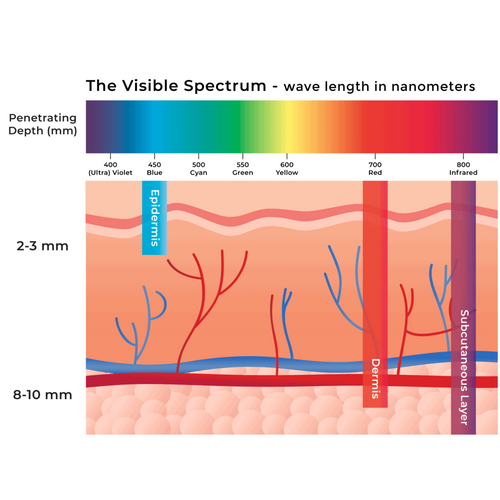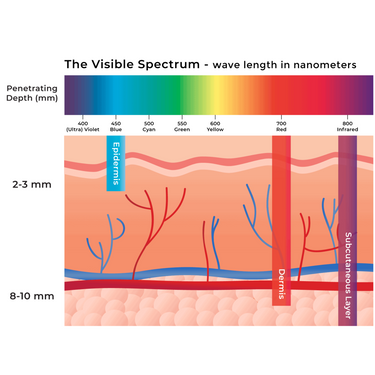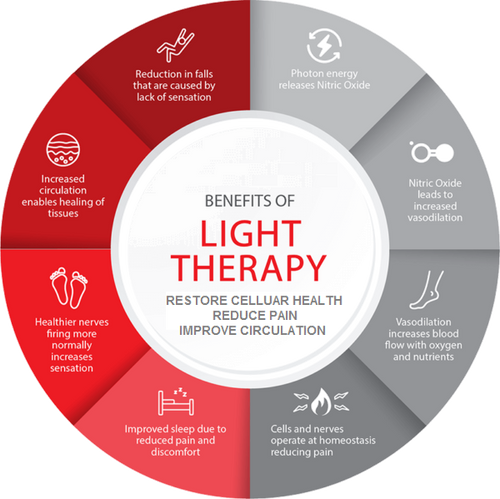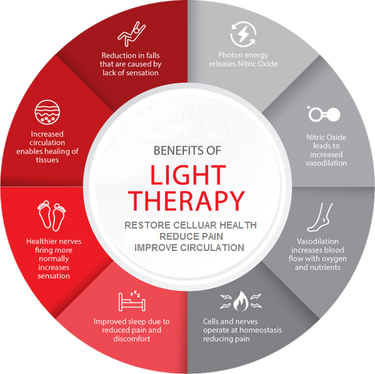

How it works?
Red light therapy operates on the principle of photobiomodulation, where specific wavelengths of light influence cellular function. Red light, typically in the range of 620 to 700 nanometers (nm), and infrared light, ranging from 700 to 1100 nm, are chosen for their ability to penetrate the skin and be absorbed by mitochondria within cells. These wavelengths primarily target a molecule called cytochrome c oxidase, a crucial component of the mitochondrial respiratory chain.
When cytochrome c oxidase absorbs red and near-infrared light, it triggers a cascade of events within the mitochondria. One of the key outcomes is an increase in adenosine triphosphate (ATP) production, which serves as the primary energy currency of cells. The enhanced ATP production provides cells with more energy to perform their various functions. This surplus energy can be harnessed for processes such as DNA repair, tissue regeneration, and the reduction of oxidative stress and inflammation.
In addition to ATP production, red light therapy can influence other cellular activities. For instance, it may stimulate the release of nitric oxide, a molecule that helps dilate blood vessels, improving blood flow and oxygen delivery to tissues. Moreover, it can modulate the activity of inflammatory cytokines, thereby reducing inflammation. These combined effects make red light therapy a promising approach for various applications, including tissue healing, pain management, skin rejuvenation, and addressing conditions associated with inflammation and cellular dysfunction.


Benefits of
Red Light Therapy
- Muscle Recovery: Red light therapy can be a valuable tool for athletes and individuals engaged in physical activities. By enhancing cellular energy production in muscles, it may accelerate muscle recovery after intense workouts or injuries. This can lead to reduced muscle soreness, improved performance, and a quicker return to physical activity.
- Improved Sleep: Red light therapy has shown promise in improving sleep quality by regulating the body's circadian rhythm. Exposure to red light in the evening can help suppress the production of melatonin, making it easier to fall asleep at the desired bedtime. Conversely, morning exposure can enhance alertness and energy levels by boosting melatonin production.
- Pain Management: It is effective in reducing pain associated with various conditions, including arthritis, fibromyalgia, and chronic pain syndromes. By reducing inflammation and promoting the release of endorphins, it can offer natural pain relief.
- Skin Rejuvenation: Red light therapy stimulates collagen production and increases blood flow to the skin, leading to improved skin tone, reduced wrinkles, and a more youthful appearance.
- Reduced Inflammation: It can help mitigate inflammation throughout the body, offering relief for individuals with chronic inflammatory conditions.
- Mood and Cognitive Benefits: Some studies suggest that red light therapy may enhance mood and cognitive function by improving mitochondrial function in brain cells, potentially aiding in mental well-being.




